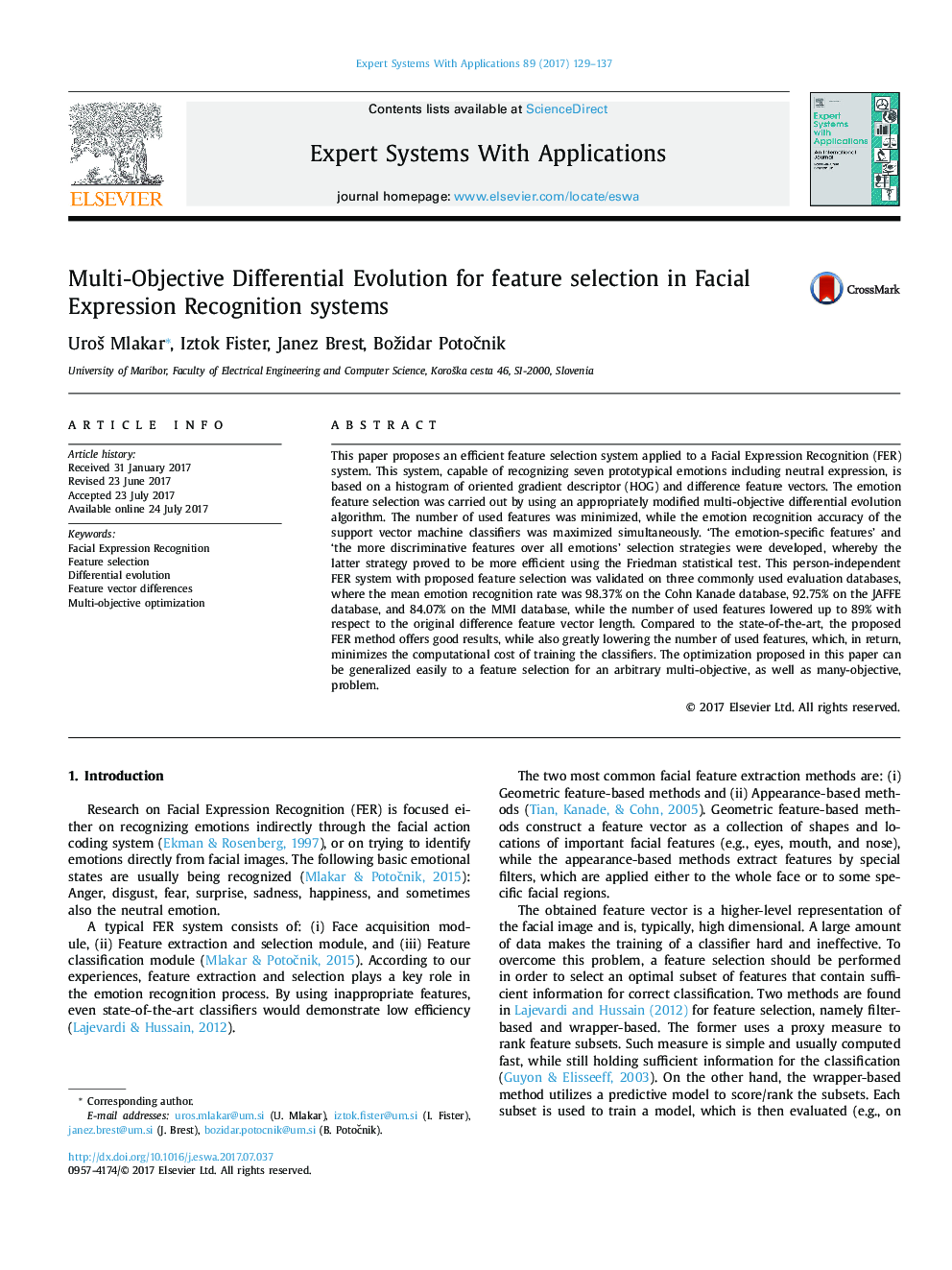| Article ID | Journal | Published Year | Pages | File Type |
|---|---|---|---|---|
| 4943211 | Expert Systems with Applications | 2017 | 9 Pages |
Abstract
This paper proposes an efficient feature selection system applied to a Facial Expression Recognition (FER) system. This system, capable of recognizing seven prototypical emotions including neutral expression, is based on a histogram of oriented gradient descriptor (HOG) and difference feature vectors. The emotion feature selection was carried out by using an appropriately modified multi-objective differential evolution algorithm. The number of used features was minimized, while the emotion recognition accuracy of the support vector machine classifiers was maximized simultaneously. 'The emotion-specific features' and 'the more discriminative features over all emotions' selection strategies were developed, whereby the latter strategy proved to be more efficient using the Friedman statistical test. This person-independent FER system with proposed feature selection was validated on three commonly used evaluation databases, where the mean emotion recognition rate was 98.37% on the Cohn Kanade database, 92.75% on the JAFFE database, and 84.07% on the MMI database, while the number of used features lowered up to 89% with respect to the original difference feature vector length. Compared to the state-of-the-art, the proposed FER method offers good results, while also greatly lowering the number of used features, which, in return, minimizes the computational cost of training the classifiers. The optimization proposed in this paper can be generalized easily to a feature selection for an arbitrary multi-objective, as well as many-objective, problem.
Keywords
Related Topics
Physical Sciences and Engineering
Computer Science
Artificial Intelligence
Authors
UroÅ¡ Mlakar, Iztok Fister, Janez Brest, Božidar PotoÄnik,
